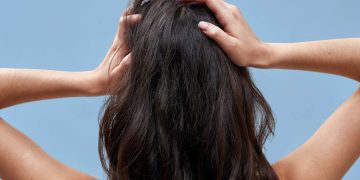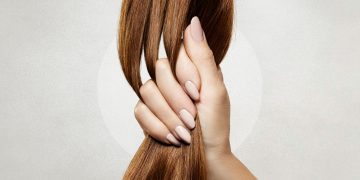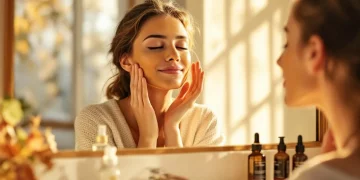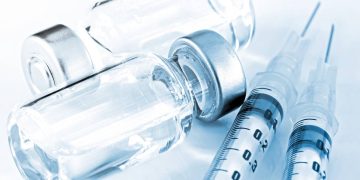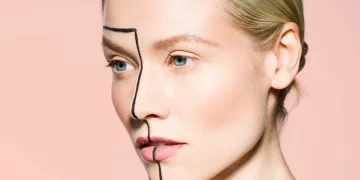Hormones are the quiet architects behind the most fundamental processes in the human body—energy, metabolism, sleep, mood, and yes, beauty. While skincare, nutrition, and lifestyle trends often dominate conversations about glowing skin and healthy aging, the endocrine system remains the invisible powerhouse that determines how your skin behaves, how your hair grows, and how your face changes across your lifespan.
From estrogen’s influence on collagen, to the thyroid’s effect on metabolism, to the cyclical dance of hormones that drives acne flare-ups, hormonal balance is one of the most overlooked yet essential foundations of beauty. When hormones work in harmony, skin appears smoother, hair grows with vitality, and the body maintains a radiant natural equilibrium. When hormones fall out of sync—due to stress, birth control changes, diet, aging, or medical conditions—the impact often shows up first in your complexion.
This article explores how three key hormonal pathways—estrogen, thyroid hormones, and the menstrual cycle—shape external beauty, and what science-backed strategies help restore balance naturally.
How Does Estrogen Shape Skin Youthfulness, Glow, and Elasticity?
Estrogen is often called the “beauty hormone”—and for good reason. It plays a direct, measurable role in nearly every factor associated with youthful, radiant skin.
1. Estrogen Boosts Collagen and Skin Thickness
Up to 30% of collagen can be lost in the first five years after menopause, almost entirely due to declining estrogen. This drop leads to:
- increased fine lines
- deeper wrinkles
- loss of firmness
- dryness and crepiness
When estrogen levels are optimal, fibroblasts (collagen-producing cells) function at their peak, creating:
- plumper skin
- better elasticity
- smoother texture
2. Estrogen Enhances Hydration
Estrogen helps regulate hyaluronic acid, the molecule that attracts and holds water in the skin. Balanced estrogen = better water retention = natural glow.
3. Estrogen and Pigmentation
Estrogen influences melanin distribution. Fluctuations may lead to:
- melasma
- patchy pigmentation
- uneven tone
This is why pregnancy, birth control, and perimenopause often bring visible skin changes.
4. How to Support Estrogen Naturally
Lifestyle can strongly support hormonal balance:
- Increase phytoestrogens: flax, soy, sesame
- Add healthy fats: avocado, olive oil, fatty fish
- Prioritize sleep
- Reduce chronic stress
- Maintain stable blood sugar
These strategies help stabilize estrogen production and clearance, supporting clearer and more vibrant skin.
How Does Thyroid Health Influence Beauty, Energy, and Metabolism?
The thyroid is the metabolic engine of the body. When it underperforms (hypothyroidism) or overperforms (hyperthyroidism), the effects are visible from head to toe.
1. Hypothyroidism and Skin Changes
Low thyroid hormone often leads to:
- dry, flaky skin
- dull complexion
- slowed skin turnover
- puffiness (especially around the eyes)
- brittle nails
- thinning hair or hair loss
Metabolic slowing reduces circulation, which affects skin oxygenation and nutrient delivery.
2. Hyperthyroidism and the Skin
When thyroid hormone is too high, symptoms can include:
- increased sweating
- flushed skin
- fragile hair
- premature aging due to accelerated cell turnover
3. The Thyroid-Hair Connection
The thyroid regulates the hair growth cycle. Hormonal imbalance can cause:
- diffuse shedding
- slow regrowth
- brittle strands
- changes in texture
Restoring thyroid balance often leads to noticeable improvements in hair thickness and shine.
4. Supporting Thyroid Function Naturally
Several factors can help optimize thyroid health:
- Adequate iodine (seaweed, iodized salt)
- Selenium (Brazil nuts, eggs)
- Zinc (pumpkin seeds, oysters)
- Stress reduction (cortisol inhibits thyroid hormone conversion)
- Balanced diet to support T4 → T3 conversion
Since thyroid disorders are medical conditions, anyone with symptoms should seek testing and professional evaluation.

Why Does the Menstrual Cycle Cause Acne—and Can Predictability Improve Skin?
Cycle-related acne is one of the strongest examples of how hormonal fluctuations shape beauty. Even women with otherwise clear skin may experience breakouts at predictable times each month.
1. The Luteal Phase: Acne’s Prime Time
About 7–10 days before menstruation, progesterone rises and estrogen falls. During this stage:
- sebaceous glands produce more oil
- pores swell slightly
- inflammatory response increases
- cravings for sugar increase (affecting insulin and acne)
All of these factors create a perfect storm for breakouts around:
- jawline
- chin
- lower cheeks
- neck
2. Androgens and Oil Production
Testosterone and other androgens stimulate sebum production. When the estrogen-to-androgen ratio dips pre-period, acne often worsens.
3. Insulin and Diet in Cycle Acne
High-glycemic foods spike insulin, which increases androgen activity. This is why:
- sugary snacks
- refined carbs
- dairy (in some individuals)
can trigger deeper cystic breakouts, especially in the luteal phase.
4. Cycle-Syncing Skincare
Adapting your skincare routine to your hormonal rhythm can improve clarity:
Follicular (post-period)
- focus on hydration and brightening
Ovulation
- boost antioxidants and sun protection
Luteal (pre-period)
- add salicylic acid
- use sulfur masks
- prioritize non-comedogenic products
Menstruation
- be gentle and avoid strong active ingredients
Understanding your cycle creates a clearer, more predictable complexion.
What Are the Signs Your Hormones Are Impacting Your Beauty?
You may be experiencing hormonal imbalance if you notice:
- persistent acne (jawline, chin, chest)
- sudden dryness or oiliness
- melasma or patchy pigmentation
- hair shedding not linked to external damage
- brittle nails
- prolonged fatigue
- unexplained weight change
- puffy eyes or facial swelling
- temperature sensitivity
- mood instability
These symptoms often cluster and evolve over time, making hormones a major but often underestimated factor in beauty.
How Do Stress and Cortisol Affect Estrogen, Thyroid, and Acne?
Cortisol, the primary stress hormone, is a direct disruptor of hormonal beauty pathways.
1. Cortisol vs. Estrogen
Chronic stress lowers estrogen levels, leading to:
- dull skin
- loss of plumpness
- worsened fine lines
2. Cortisol vs. Thyroid
High cortisol reduces T3 production, contributing to:
- slower metabolism
- dryness
- hair loss
3. Cortisol and Acne
Stress increases:
- inflammation
- oil production
- hormonal fluctuations
This is why exam season, work pressure, or poor sleep often trigger breakouts.
Reducing Cortisol for Beauty Benefits
- daily walking or light cardio
- restorative yoga
- magnesium supplementation
- consistent sleep schedule
- mindfulness or breathwork
- balanced meals
Lower cortisol = better hormonal harmony = visibly healthier skin.
Can Lifestyle Restore Hormonal Beauty Naturally?
While medical care is essential for diagnosed endocrine disorders, lifestyle influences up to 50% of hormonal balance.
The Beauty-Boosting Lifestyle Foundations
- Consistent sleep
Hormones—including estrogen, thyroid hormones, and cortisol—reset during deep sleep. - Blood sugar stability
Balanced meals with protein, fat, and fiber prevent androgen spikes linked to acne. - Regular physical activity
Enhances estrogen metabolism, improves thyroid conversion, and reduces stress hormones. - Anti-inflammatory nutrition
Supports clear skin and reduces hormonal congestion. - Limiting endocrine disruptors
Common sources include plastics, fragrances, and certain cosmetics. - Supporting gut health
Gut flora influences estrogen breakdown and inflammatory pathways.
Small habits stack into powerful, long-term hormonal glow.
Is Hormonal Harmony the Future of Beauty Medicine?
As aesthetic medicine evolves, experts are acknowledging that no amount of topical care can compensate for hormonal imbalance. The future of beauty lies in integrative approaches:
- endocrinology + dermatology
- nutrition + aesthetics
- lifestyle science + cosmetic treatments
Personalized hormone testing, cycle-based skincare, and metabolic beauty programs are becoming the new standard in holistic aesthetic care.
Balancing hormones is not about chasing perfection—it’s about aligning your body’s internal rhythms so your natural radiance can surface effortlessly.
True beauty begins with internal harmony.














